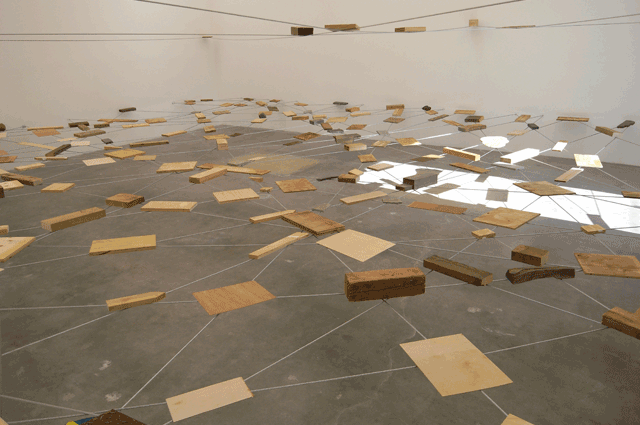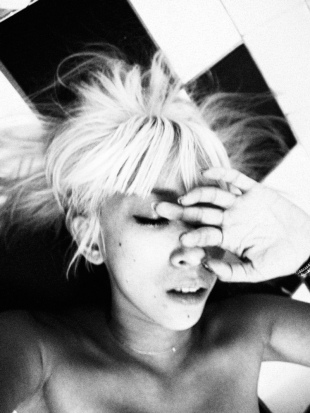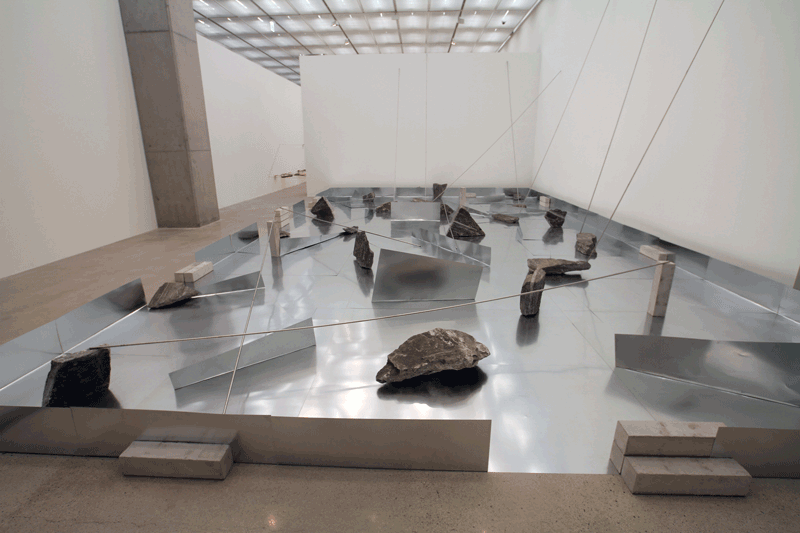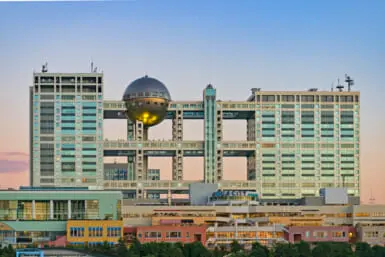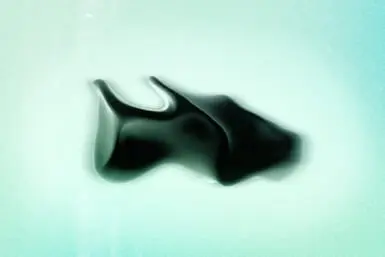This month we bring you three solo exhibitions of Japanese native artists, each asking, in his or her own way, what it means to be an individual among many artists, and many selves.
By Sarah Custen
Takamatsu Jiro: Mysteries
Takamatsu Jiro was an artist who defied categorization: simply too quick to change, and too difficult to pin down. Different phases of his career meant entirely different mediums and raised different questions in their exploration of shadow, light, and texture. There are the eerily empty tables and chairs with strange, sharp perspectives; the photographs of photographs; intricate, chaotic, yet unified paintings; and installations of artificial light and forced shadows.
Yet, taken all together, a consistent image of the artist begins to take shape. This exhibition highlights 45 important works from three phases of Takamatsu’s career: his early “Dot and String” series, followed by his mid-period “Shadow, Oneness and Compound” series, and rounded out with his late “Space in Two Dimensions” series. Supplementing this comprehensive catalog are 151 related drawings.
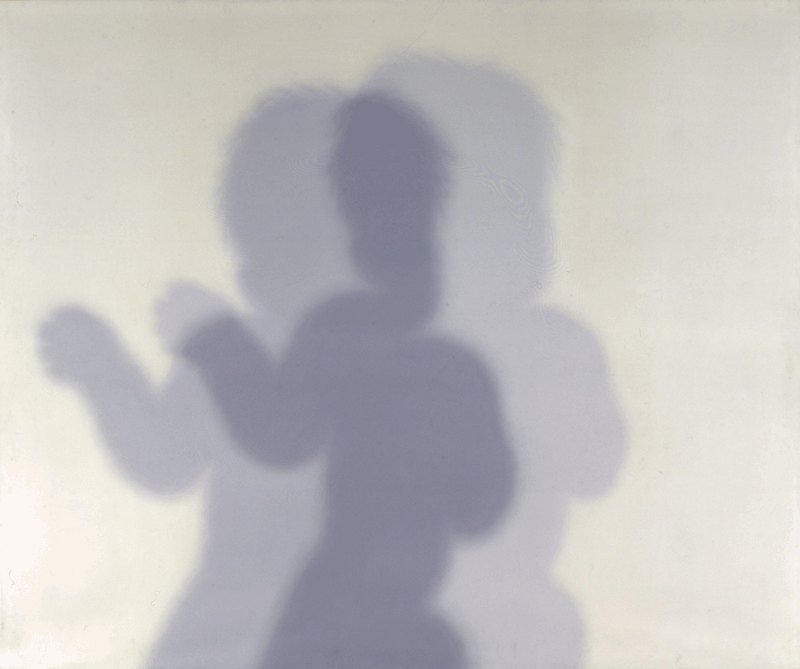
Takamatsu Jiro, No.273 (Shadow) 1969, The National Museum of Modern Art, Tokyo ©The Estate of Jiro Takamatsu, Courtesy of Yumiko Chiba Associates
But the highlight—and its complementary shadow—of this exhibition is the “Shadow Lab,” where viewers “can actually experience the mechanism Takamatsu used to make his notable Shadow series,” explained MOMAT PR assistant Mitsuki Asukagawa. Asukagawa also notes that there are subtle “hints” interspersed throughout the exhibition, including Takamatsu’s own words, serving as a window into the artist’s philosophy and development. “With these as a guide,” Asukagawa said, “we look forward to joining you in unraveling the mysteries of these initially enigmatic works.”
National Museum of Modern Art, Tokyo
Dates: December 2, 2014–March 1, 2015
Open: 10:00–17:00, Fridays until 20:00, closed Mondays
Web: www.momat.go.jp/english/artmuseum/takamatsujiro/index.html
Mika Ninagawa: Self-Image
Mika Ninagawa’s work is not only a study in self-image, it’s an exploration in contrasts, a voyage into the many facets that make up an individual. For Ninagawa, these facets include film director, music video creator, and most recently, officer of the Tokyo Organizing Committee of the Olympic and Paralympic Games. Ninagawa is famous for her work directing 2007’s SAKURAN and 2012’s Helter Skelter, as well as her trademark vibrancy, dubbed “Ninagawa-color.” Through her saturated, hyper-real lenses, flowers gleam like candied jewels, and teen idols shine in otherworldly pop splendor.
But Ninagawa has a shadowy side, too. The Tokyo-born artist has also produced a series of monochromatic self-portraits, spanning the length of her already prolific career, collected for the first time in this exhibition, alongside her photographic series noir (an examination of dark themes within Japanese contemporary society), and PLANT A TREE (images of rivers scattered with cherry blossoms).
“She brings exceptional ambition and abilities to her work,” said a Hara curatorial department spokesperson, adding, “She also has the rare ability to maintain a balance between making art and making commercial work.” Hara representatives describe Ninagawa’s better-known work as bright and open, conveying a sense of happiness, whereas this exhibition centers on “a parallel side that she has constantly pursued, one that stands in contrast to the vibrancy.”
Within that disparity, we can gain a deeper sense of Ninagawa’s understanding and expression of her own self-image. “It is a special show,” Hara personnel said, “because it features only those photographs that Ninagawa really wants people to see.”
Hara Museum of Contemporary Art
Dates: January 24–May 10, 2015
Open: Open 11:00-17:00, Wednesdays until 20:00, closed Mondays
Web: www.haramuseum.or.jp/generalTop.html
Kishio Suga: Situated Latency
Kishio Suga is an emblem of the Monoha movement, a 20th century collection of Japanese artists who explored the relationship between natural and industrial materials. Often, Monoha installations focused on the surrounding space created by the intersection of earthly and man-made, as much as the materials themselves.
This exhibition singles out only one artist, however—Kishio—in its effort to recreate the richness of 1970s Monoha culture. Kishio has been chosen as a stand-in for an entire movement and generation, introducing Monoha to new audiences, while asking them to ponder questions still worth asking. What vitality can stone, wood and sheet metal lend to a space? What shapes are created by these materials, and what shapes are created in the former emptiness around them? What shape is the feeling inside of us as we ponder these exhibitions, transported through time and yet somehow brand new?
Museum of Contemporary Art, Tokyo
Dates: January 24–March 22, 2015
Open: 10:00–18:00, closed Mondays
Web: www.mot-art-museum.jp/eng/exhibition/schedule.html
Main Image: 《捨置状況》1972/2013年 Collection: GLENSTONE 撮影:佐藤毅

